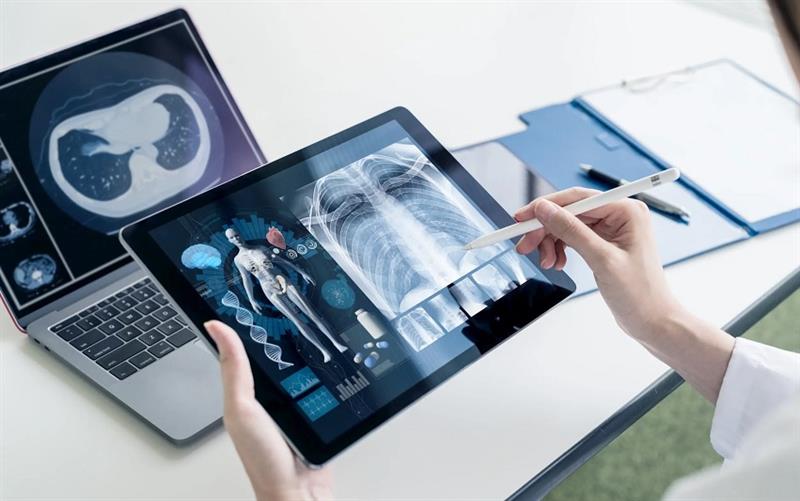
Nowadays, healthcare software is a need rather than a luxury in contemporary medical procedures. It has a significant impact on everything from telemedicine and security to patient care and administrative effectiveness. Healthcare software will become even more important in determining the direction of medicine as technology develops, guaranteeing improved results for patients and healthcare professionals alike.
In the rapidly changing medical field of today, effective, patient-centered care is now based on healthcare software. Healthcare software is crucial to guaranteeing high-quality healthcare delivery, from expediting administrative duties to enhancing diagnosis and treatment. Let's examine why healthcare software is essential to contemporary medical procedures and how it is transforming the sector.
1. Enhancing Patient Management and Care
In contemporary healthcare, effective patient management is essential. Advanced features offered by healthcare software enable doctors to easily manage treatments, make appointments, and keep track of patient histories.
Maintain thorough patient data via electronic health records (EHRs), which cut down on paperwork and increase accessibility.
Automated Scheduling Systems: Increase appointment efficiency and decrease no-shows.
Remote patient monitoring improves proactive treatment by enabling real-time tracking of patient status.
2. Optimizing Workflow Efficiency
By streamlining processes, healthcare software helps clinics and hospitals run efficiently and without administrative snags.
Automated insurance and billing processing speeds up the processing of claims and lowers human error.
Task automation frees up staff members to concentrate on patient care by lowering their administrative workload.
Improve departmental cooperation and guarantee prompt medical responses with integrated communication tools.
3. Improving Diagnosis and Treatment Accuracy
Cutting-edge medical software aids in precise diagnosis and efficient treatment of ailments.
AI-Powered Diagnostic Tools: Help medical professionals spot illnesses early.
Clinical Decision Support Systems (CDSS): Offer suggestions based on research to enhance treatment regimens.
Medical imaging software improves analysis and visualization for more accurate diagnosis.
4. Ensuring Data Security and Compliance
In contemporary healthcare, protecting patient data is of utmost importance. Software for the healthcare industry aids in ensuring adherence to laws like GDPR and HIPAA.
Safeguard private patient data with data encryption and access controls.
Automated Compliance Checks: Preserve regulatory compliance and lower legal risks.
Audit Trails: Monitor system operations to improve accountability and transparency.
5. Facilitating Telemedicine and Remote Care
Access to healthcare has improved with the growth of telemedicine, especially in rural areas. Remote care services and virtual consultations are made possible by healthcare software.
Platforms for video conferences: Allow patients and physicians to communicate from any location.
E-Prescription Tools: Make it possible to safely prescribe drugs online.
Apps for health monitoring: Give people instant access to their medical information and advice.
6. Enhancing Inventory and Supply Chain Management
Medical supplies are essential to hospitals and clinics, so effective inventory control is essential.
Overstocking and shortages of necessary goods are avoided using automated stock tracking.
Predictive analytics aids in estimating the demand for equipment and pharmaceuticals.
Vendor integration makes supply chain management and procurement easier.
7. Supporting Research and Data Analytics
The advancement of healthcare depends on medical research and data-driven insights.
Big Data Analytics: Assists in spotting patterns and enhancing therapeutic results.
Clinical Trials Management: Makes it easier to plan and monitor research projects.
Health informatics: Uses reporting tools and data visualization to improve decision-making.
8. Reducing Healthcare Costs
Healthcare software can be used to maintain high-quality care while drastically reducing operating expenses.
Reduced Administrative Costs: Task automation lowers paperwork and staffing requirements.
Effective Resource Allocation: Guarantees improved use of medical personnel and equipment.
Fraud Prevention: Fraudulent claims and billing errors are prevented by sophisticated security measures.
9. Enhancing Patient Engagement and Satisfaction
Healthcare software enhances the overall experience and gives patients the power to take control of their health.
Patient portals: Make it simple to access test results, medical records, and doctor communications.
Patients can better manage chronic illnesses and drug adherence with the aid of personalized health tracking.
Online appointment scheduling saves wait times and simplifies scheduling.
10. Facilitating Collaboration Among Healthcare Providers
Providing complete patient care requires seamless teamwork, and healthcare software is essential to this process.
System Interoperability: Facilitates the safe exchange of patient data between various healthcare providers.
Multi-Specialty Coordination: Facilitates effective collaboration between physicians, nurses, and specialists.
Collaboration across telehealth teams: Facilitates online case conferences and consultations.